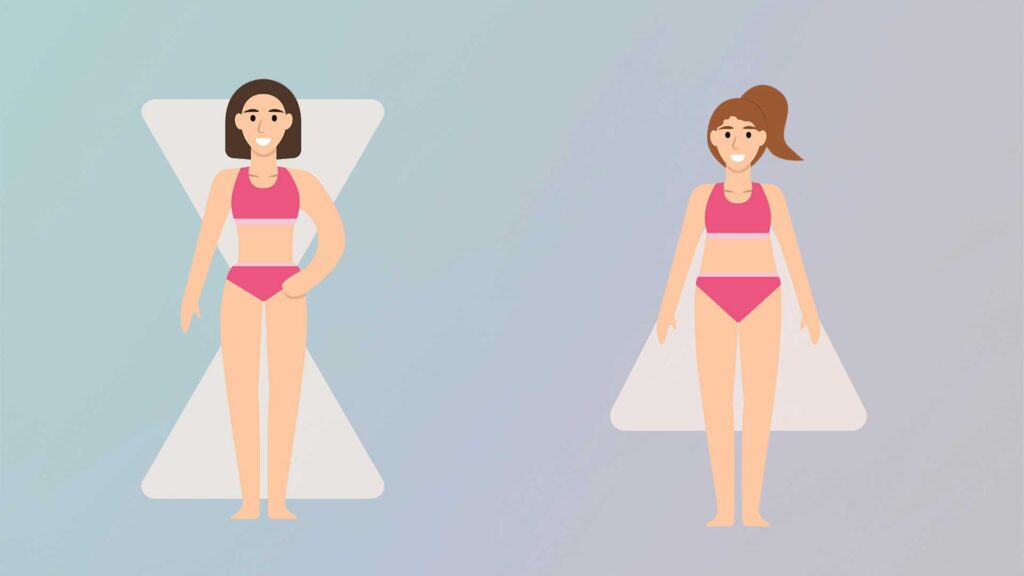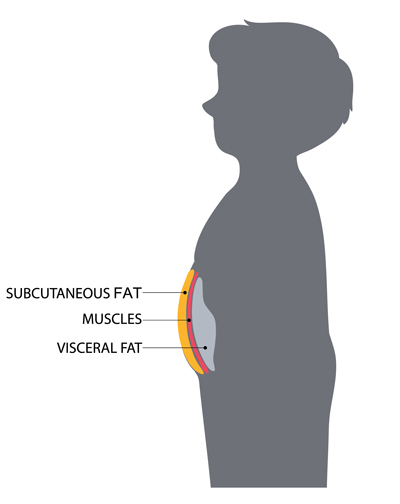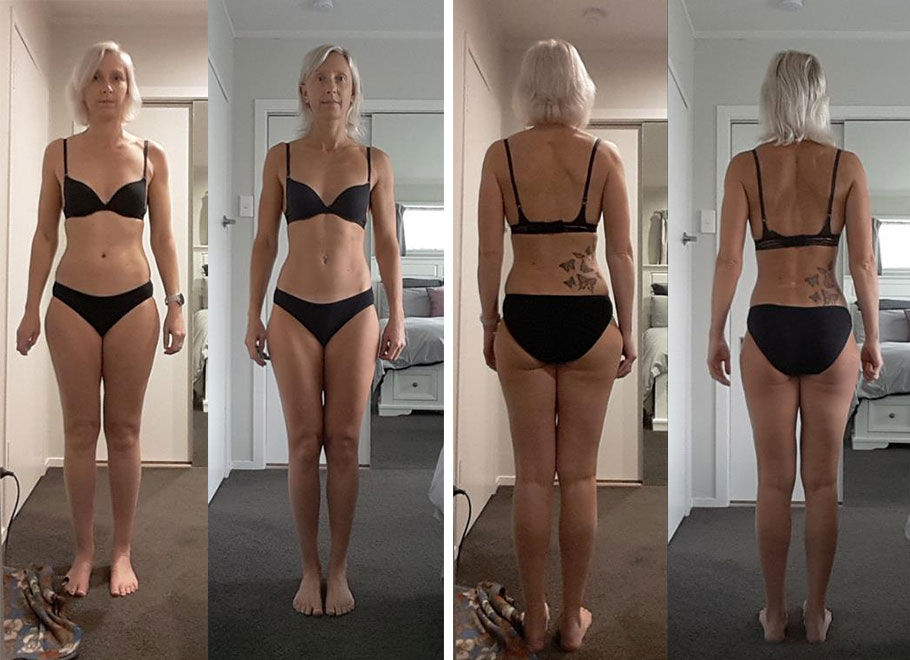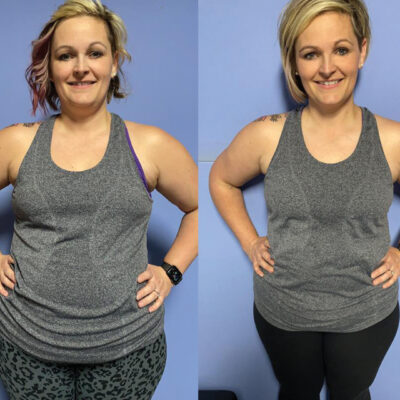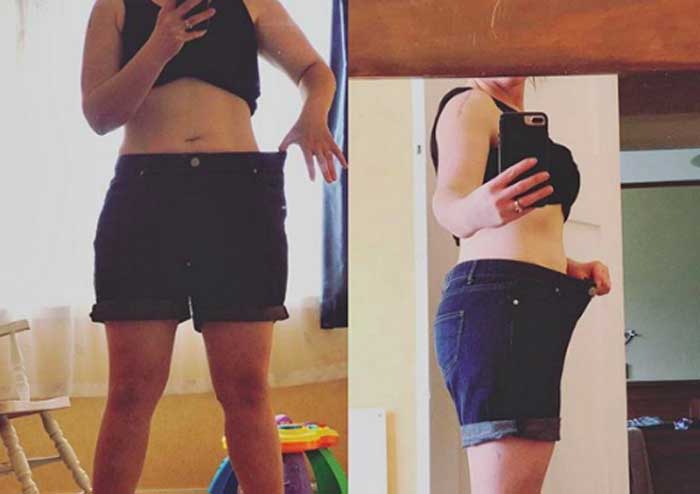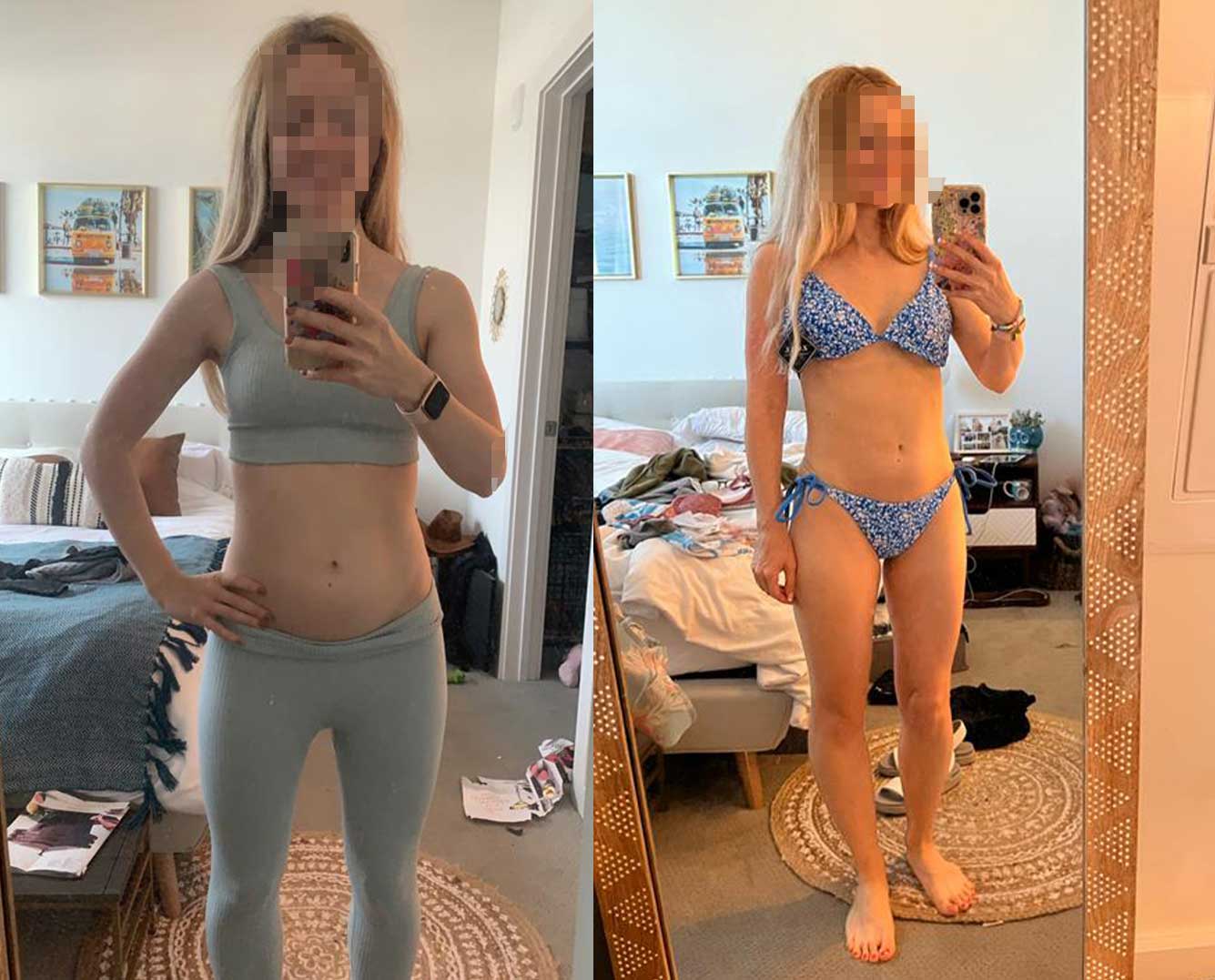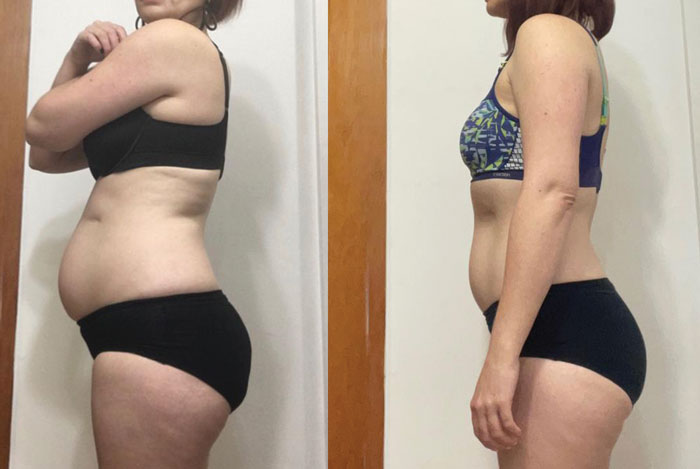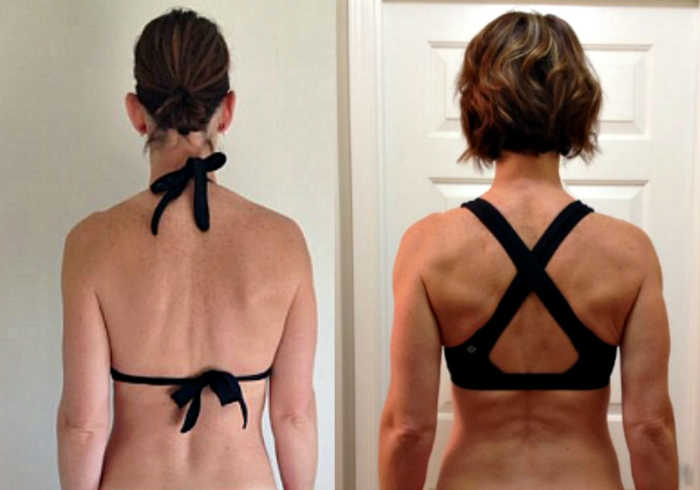Do you feel like, no matter what you do, you’ve been gaining weight since arriving at midlife? Maybe it’s just subtle but every year you seem to feel a little more fluffy and frumpy. This happens because your body composition is changing along with your changing hormones. In this article you’ll learn all about the very important role that estrogen plays in body composition – including some tips for what you can do to deal with those changes you are experiencing.
Middle age typically means that fat increases and muscle decreases. But there is so much you can do to ensure you don’t go down the same trajectory as everyone else. There are many women who defy this pattern which means it’s possible for you too.
Estrogen Mastery 101
We all know that estrogen changes as we age and this is the reason for our transition to menopause. If you aren’t sure how it all works, here’s a primer on how estrogen changes from your 40s and on.
Perimenopause
According to Lara Biden, an expert in women’s hormones, perimenopause can be anywhere from 2 to 10 years before your final period, and on average takes about 7 years. This means perimenopause can happen as early as your late 30s but for most women, it’s more likely to start in our 40s.
During this time, the ovaries gradually produce less estrogen. However, estrogen levels can fluctuate unpredictably, while progesterone tends to remain low in comparison, leading to irregular periods and many of the symptoms we experience during this time.
Menopause
Menopause is officially reached when you have gone 12 consecutive months without a menstrual period. At this point, estrogen levels significantly decrease as the ovaries produce less estrogen and progesterone.
This is when most women notice the biggest change in body composition with a significant increase in fat mass and a decline in muscle mass.
Postmenopause
After menopause, estrogen levels remain consistently low. Postmenopause your ovaries continue to make estrogen, just much less (approximately 10% of what you used to make in your reproductive years). Your body will make the estrogen it needs, for example to support the heart and brain, using an enzyme called aromatase.
Lower estrogen postmenopause can contribute to various health concerns, including bone loss, changes in skin elasticity, and an increased risk of cardiovascular disease. Low estrogen also makes maintaining an ideal body composition more difficult.
The Role Of Estrogen In Body Composition
Change in Body Fat & Distribution Of Body Fat
It’s very clear that the reduction of estrogen during menopause is related to an increase in fat mass and a decrease in muscle mass. There are other factors at play, including diet, nutrition and lifestyle, but changing hormones definitely play a key role.
Estrogen plays a role in fat distribution in the body, and changes in its levels impact where fat is stored. During younger years, when estrogen levels are higher, fat tends to be distributed around the hips and glutes, often referred to as a “pear-shaped” body. As estrogen declines during menopause, the relative influence of testosterone increases. Testosterone, among its various effects, can contribute to fat accumulation around the midsection, leading to an “apple-shaped” body.
Research suggests that before menopause, a higher percentage of body fat is typically subcutaneous (under the skin and over the muscles), while after menopause, there is a shift towards a higher percentage of visceral fat. Visceral fat refers to the fat that accumulates around internal organs, such as the liver, pancreas, and intestines, and is associated with certain health risks. This shift in fat distribution is also influenced by estrogen levels.
Increased visceral fat has been linked to a higher risk of metabolic and cardiovascular diseases. Therefore, understanding these changes in body composition during and after menopause is important for managing overall health and longevity as well as your weight.
PRO TIP:
The fat stored in the abdomen, particularly the deep visceral fat, is not the same as fat in other parts of the body. This abdominal fat is more active and releases substances called pro-inflammatory cytokines and adipokines. Now, why does that matter? Because these substances can cause inflammation in the body. Inflammation is linked to various health issues.
Estrogen’s Role In Muscle Mass and Strength
Estrogen influences muscle mass in a number of ways which could be why, at least in part, we experience a decline in muscle mass when we transition to menopause.
Protein Synthesis:
Estrogen promotes protein synthesis, the process by which cells build proteins. Protein synthesis is how we grow, repair and maintain muscle.
Inhibition of Protein Breakdown:
Estrogen also inhibits protein breakdown in muscle tissue. It can reduce the activity of certain enzymes and pathways responsible for breaking down proteins. By limiting protein breakdown, estrogen helps to preserve existing muscle mass.
Interaction with Growth Factors:
Estrogen interacts with growth factors, such as insulin-like growth factor 1 (IGF-1), which play a role in muscle growth and repair. Estrogen can enhance the effects of these growth factors, contributing to the overall anabolic (muscle building) environment in muscle tissue.
Mitochondrial Function:
Estrogen has been shown to have positive effects on mitochondrial function. Mitochondria are the energy-producing structures within cells, and their efficient function is crucial for muscle performance, energy and health.
Muscle Repair and Recovery:
Estrogen has anti-inflammatory effects, and this can be beneficial for muscle recovery after exercise or injury.
Connective Tissue Support:
Estrogen is involved in collagen synthesis, which is crucial for the health of connective tissues, including tendons and ligaments that support muscles. This may contribute to overall muscle function and flexibility.
Bone Density:
Estrogen plays a significant role in maintaining bone density and decreased estrogen can lead to bone loss. Since bones provide structural support for muscles, changes in bone density can potentially impact muscle function.
The Link Between Estrogen And Cellulite
Cellulite creates a lot of body dissatisfaction, especially as we get older. Cellulite has many causes, including genetics, diet and a sedentary lifestyle. However, hormones also play a big role. For example, high estrogen relative to progesterone, such as occurs during pregnancy and perimenopause, can influence the development of cellulite. Declining estrogen also impacts the development and appearance of cellulite.
The relationship between cellulite and estrogen is extremely complex but here is an overview of the main aspects:
Connective Tissue Changes:
Estrogen helps maintain the elasticity and firmness of connective tissues, including the collagen and elastin fibers in the skin. As estrogen levels decline, changes in connective tissue structure and function may contribute to the appearance of cellulite. This is a big piece of the puzzle that most women are missing when they are concerned about cellulite. Just like skin wrinkles, because cellulite is related to elasticity and firmness, there is only so much we can do about it.
Increase in Fat Mass:
In perimenopause, in spite of overall declining of estrogen, estrogen can still remain high compared to progesterone, and this ‘estrogen dominance’ creates conditions for cellulite. Obviously an increase in fat mass, as often experienced during the menopause transition, can contribute to the appearance of cellulite as well.
There are also local hormonal mechanisms (meaning located in a specific area of the body) that can influence the development of cellulite.
Blood Flow and Lymphatic Drainage:
Estrogen influences blood flow, blood vessels and lymphatic drainage, and alterations in these may contribute to cellulite.
This is a very simple overview of cellulite but the main takeaway should be that cellulite is not just a fat issue – it’s an aging issue – which means there is only so much you can do about it. Building muscle will help smooth it out so that is one of the best ways to address it.
What You Can Do About Your Changing Body & Hormones
It’s not as simple as telling you to get your hormones sorted out so you don’t gain weight. The dance of hormones during perimenopause is chaotic – it changes constantly and throws you around despite you trying your best. Knowledge is the first step – so you are in the right place. Patience and self-care is the crucial second step. Finally, you also need good coaches – not just for your fitness and nutrition but also for your hormones. The latter may be a doctor, naturopath or other practitioner skilled in monitoring and balancing hormones, particularly through the menopause transition.
There are many women who defy the typical midlife weight gain pattern. You’ll find testimonials from many of them here on my website. If it’s possible for them, it’s possible for you too.
I dare say changing hormones is one of the biggest challenges we have to deal with as women and it’s not something you can likely do without help. A really good step in preventing the midlife changes in body composition is following a proper weight training program. You can learn more about my programs here:
Over 40 Transformation Program (Training & Nutrition)
Online Training Programs (Training only)
Don’t hesitate to reach out if you aren’t sure where to start. xo
(Images courtesy of brgfx on Freepik).

